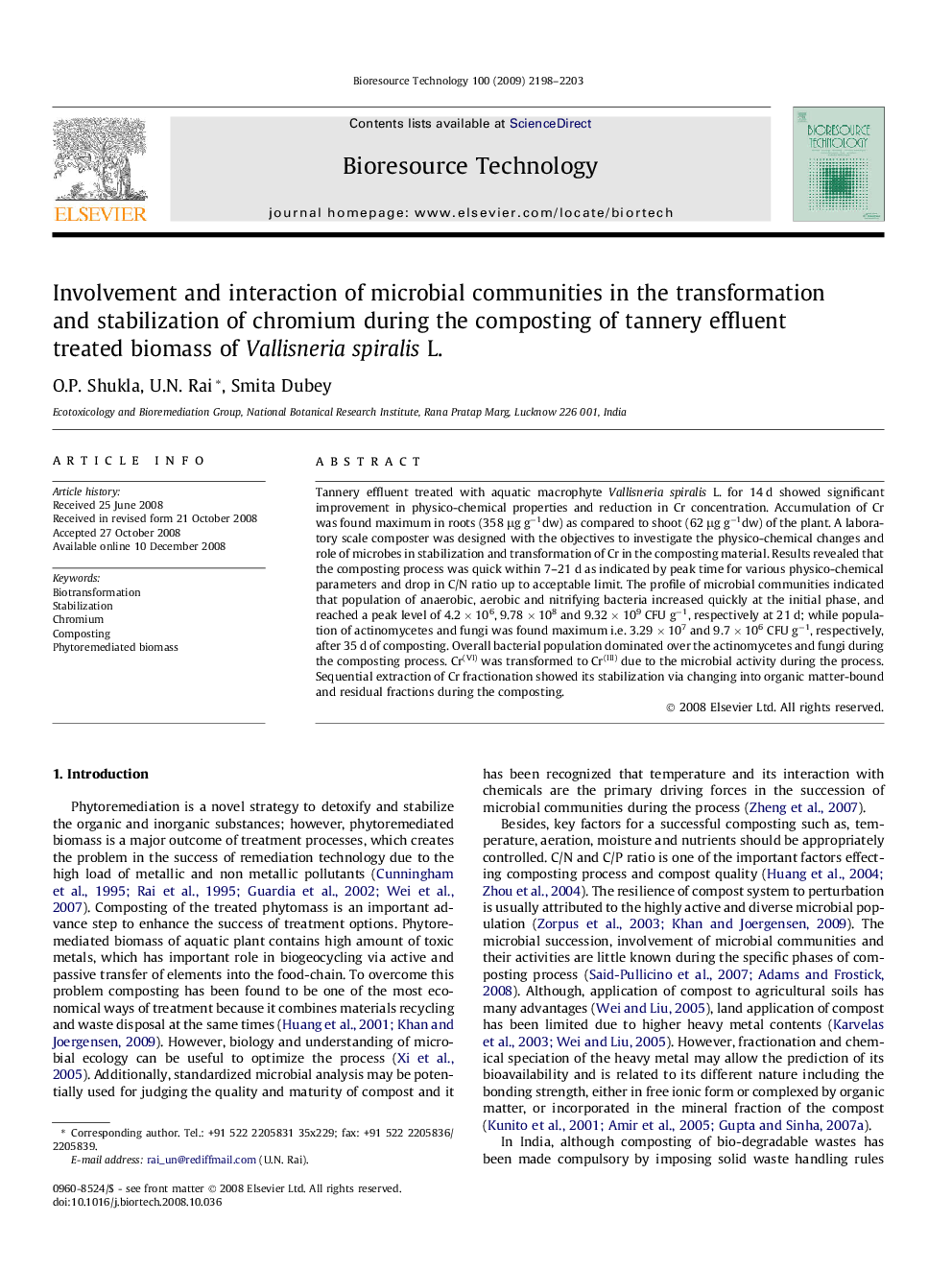| Article ID | Journal | Published Year | Pages | File Type |
|---|---|---|---|---|
| 684020 | Bioresource Technology | 2009 | 6 Pages |
Tannery effluent treated with aquatic macrophyte Vallisneria spiralis L. for 14 d showed significant improvement in physico-chemical properties and reduction in Cr concentration. Accumulation of Cr was found maximum in roots (358 μg g−1dw) as compared to shoot (62 μg g−1dw) of the plant. A laboratory scale composter was designed with the objectives to investigate the physico-chemical changes and role of microbes in stabilization and transformation of Cr in the composting material. Results revealed that the composting process was quick within 7–21 d as indicated by peak time for various physico-chemical parameters and drop in C/N ratio up to acceptable limit. The profile of microbial communities indicated that population of anaerobic, aerobic and nitrifying bacteria increased quickly at the initial phase, and reached a peak level of 4.2 × 106, 9.78 × 108 and 9.32 × 109 CFU g−1, respectively at 21 d; while population of actinomycetes and fungi was found maximum i.e. 3.29 × 107 and 9.7 × 106 CFU g−1, respectively, after 35 d of composting. Overall bacterial population dominated over the actinomycetes and fungi during the composting process. Cr(VI) was transformed to Cr(III) due to the microbial activity during the process. Sequential extraction of Cr fractionation showed its stabilization via changing into organic matter-bound and residual fractions during the composting.
